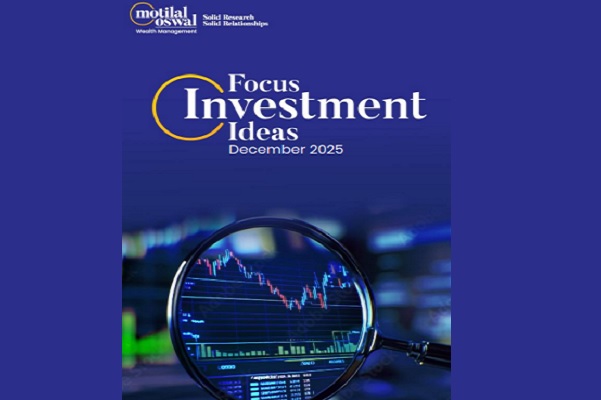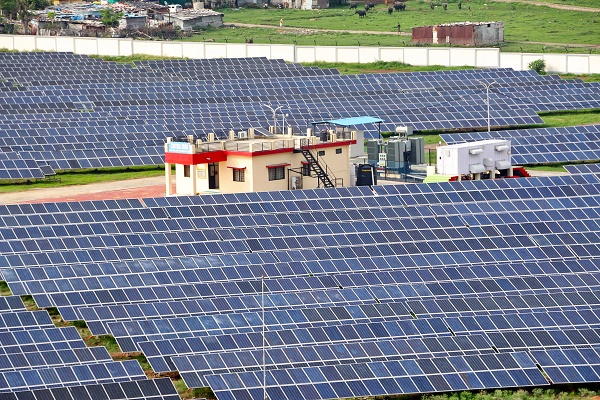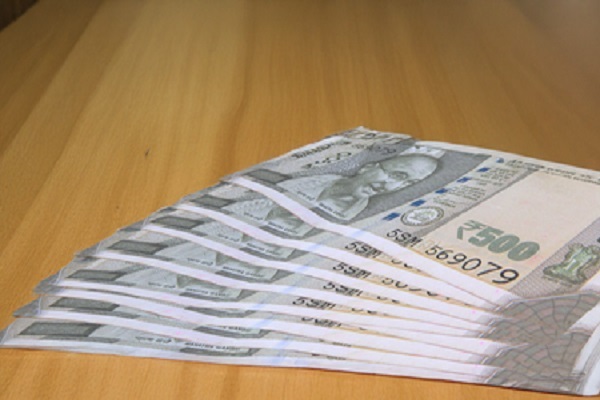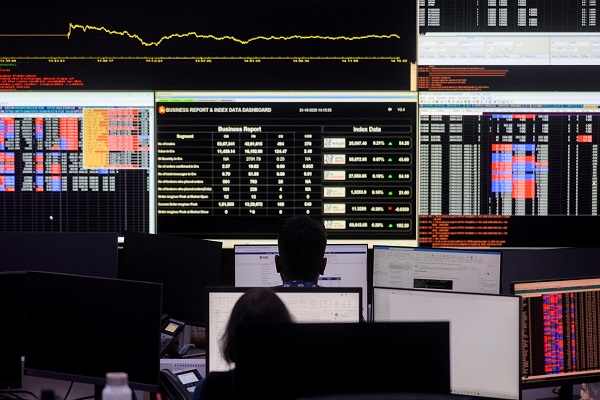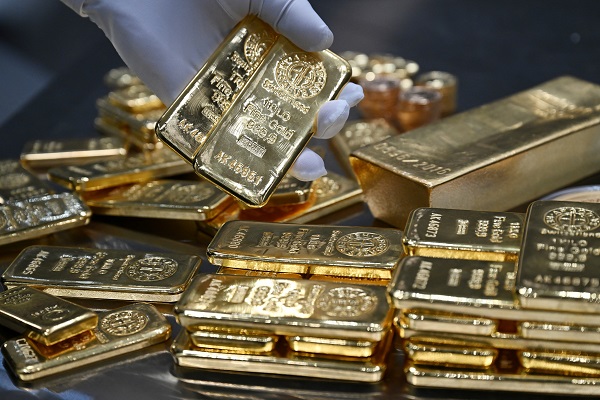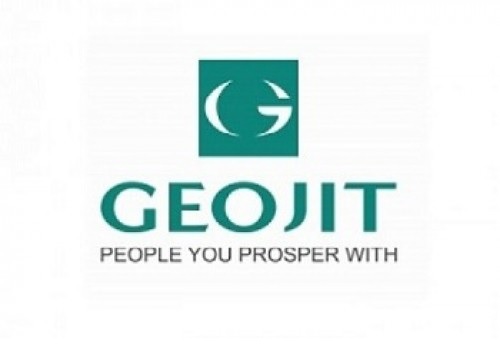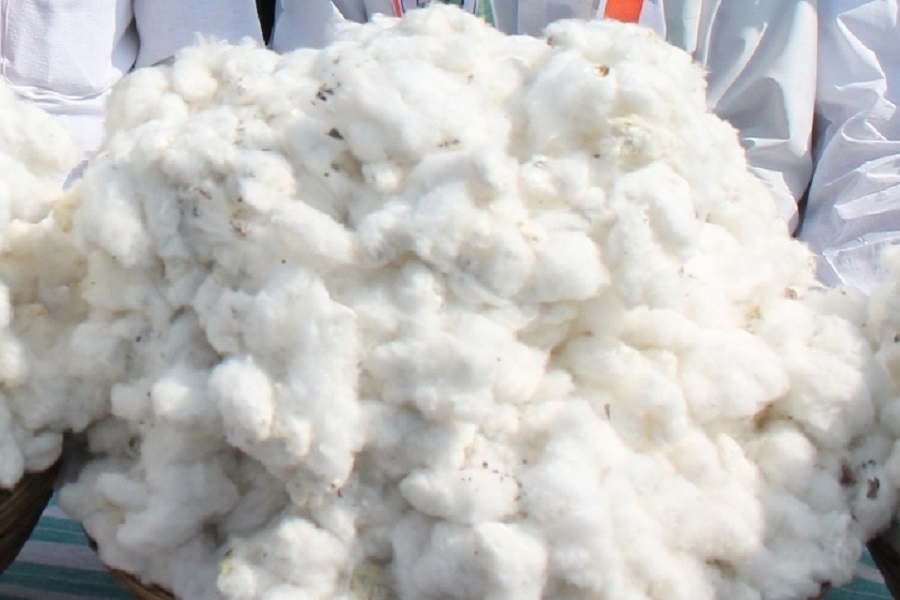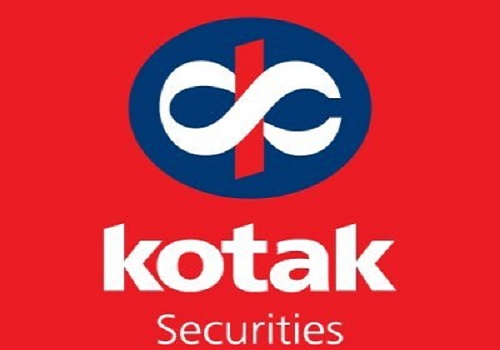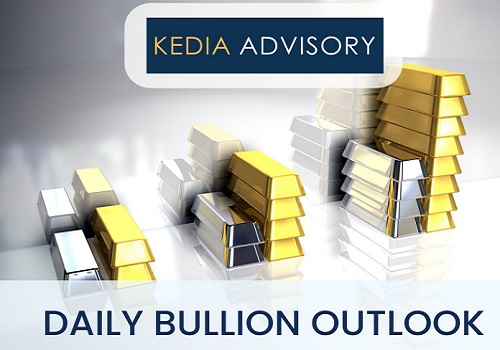Crudeoil trading range for the day is 5153-5569 - Kedia Advisory
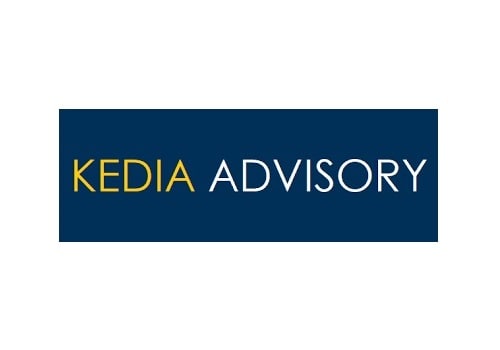
Gold
Gold prices surged by 2.17% to 97,953 as heightened geopolitical tensions and fresh trade-related threats reignited investor appetite for safe-haven assets. The rally was primarily driven by U.S. President Donald Trump's declaration to double tariffs on steel and aluminium imports to 50%, effective June 4. This move, combined with escalating hostilities in the Russia-Ukraine conflict—highlighted by a Ukrainian drone strike that destroyed over 40 Russian aircraft—added to market volatility, prompting risk-averse buying in bullion. Despite the global price surge, physical demand remained muted in India due to elevated domestic prices and the conclusion of the wedding season. Indian gold dealers offered discounts of up to $31/oz, narrower than last week’s $49, reflecting softer retail activity. In contrast, Chinese demand remained relatively resilient, with gold premiums hovering between par and $15/oz. Notably, China’s gold imports via Hong Kong in April nearly tripled month-on-month, reaching a one-year high, indicating strong underlying demand. Global gold demand rose 1% year-on-year to 1,206 metric tons in Q1 2025, led by a 170% surge in investment demand.. Central bank purchases also dipped 21% to 243.7 tons. Technically, the market is experiencing fresh buying with a significant 19.54% jump in open interest to 16,036 contracts. Immediate support is seen at 96,690, below which prices may test 95,420. Resistance lies at 98,640, and a breakout above could push prices to 99,320.
Trading Ideas:
* Gold trading range for the day is 95420-99320.
* Gold prices rose on safe-haven demand amid renewed U.S. tariff threats.
* Trump announced steel and aluminium tariffs doubling to 50% starting June 4.
* Trump accuses China of breaching tariff truce; Beijing issues counter-claims.
Silver
Silver prices surged by 4.12% to 101,011 amid rising global trade tensions, boosting investor interest in safe-haven assets. The rally followed U.S. President Donald Trump’s announcement to double tariffs on steel and aluminium imports to 50% starting June 4, exacerbating fears of an intensifying trade war. Market sentiment was further rattled after China rejected Trump’s accusation of breaching a trade agreement, while ongoing legal disputes over the legitimacy of the U.S. tariffs added to the uncertainty. This geopolitical backdrop prompted a strong flight to safety, pushing silver prices sharply higher, mirroring gains in gold. On the fundamentals front, the silver market is poised to register a supply deficit for the fifth straight year in 2025. Global demand is expected to remain stable at 1.20 billion ounces. Industrial demand—particularly from green economy sectors—is set to rise 3% and exceed 700 million ounces for the first time. Meanwhile, physical investment demand is projected to grow by 3%, driven by renewed interest in Europe and North America, as investors adapt to elevated price levels. Technically, silver is witnessing short covering, evident from a 10.18% drop in open interest to 17,718 contracts while prices gained 3,996. Support is now seen at 98,375, with further downside risk to 95,735. On the upside, resistance lies at 102,400, and a break above could lead to a test of 103,785.
Trading Ideas:
* Silver trading range for the day is 95735-103785.
* Silver prices rose as global trade tensions fueled demand for safe-haven assets.
* President Trump said that US tariffs on steel and aluminium imports will double from 25% to 50%, starting Wednesday.
* China denied breaching trade deal, casting doubt on future U.S.-China talks.
Crude oil
Crude oil prices surged by 3.31% to 5,375, driven by OPEC+’s decision to raise output by a modest 411,000 barrels per day in July—matching increases from the past two months and easing fears of a steeper supply hike. The move is seen as an effort to rein in overproducing members like Iraq and Kazakhstan, while enabling key players such as Saudi Arabia and Russia to reclaim market share. Geopolitical tensions added further bullish momentum, with Ukraine's drone strikes damaging Russian airbases and Moscow responding with heavy bombardment, highlighting ongoing war-related supply risks. U.S. inventory data further supported prices. Crude oil stockpiles fell by 2.795 million barrels, defying expectations of a build, while gasoline and distillate inventories dropped by 2.441 million and 724,000 barrels respectively, indicating firm demand. However, inventories at the Cushing, Oklahoma delivery hub rose slightly by 75,000 barrels. On the macro front, Goldman Sachs anticipates another 0.41 million bpd production increase in August, supported by tight fundamentals and seasonal demand strength. Meanwhile, the IEA projects global oil demand growth to slow to 650,000 bpd in the second half of 2025, weighed down by economic headwinds and increased EV adoption. Technically, the market is under short covering, evident from a sharp 40.49% drop in open interest to 6,088 while prices rose 172. Crude oil now finds support at 5,264, with further downside potential to 5,153. Resistance is pegged at 5,472, and a breakout above could push prices toward 5,569.
Trading Ideas:
* Crudeoil trading range for the day is 5153-5569.
* Crude oil rose after OPEC+ kept July output hike unchanged at 411,000 barrels/day.
* OPEC+ aims to discipline overproducing members like Iraq and Kazakhstan with output cap.
* Russia and Saudi Arabia seek to regain lost market share amid tight controls.
Natural gas
Natural gas prices surged by 6.17% to settle at 314.7, buoyed by a combination of increased demand, lower production, and strength across the broader energy complex. Forecasts for above-normal temperatures have heightened expectations for elevated air conditioning usage, adding to short-term demand. Additionally, production fell to 105.0 billion cubic feet per day (bcfd) in May, down from April’s record 105.8 bcfd, primarily due to routine maintenance, including work on the Kinder Morgan Permian Highway pipeline. The bullish sentiment was further reinforced by a rally in oil markets, where prices jumped over 3% after OPEC+ maintained its July production increase, supporting the overall energy complex. However, feedgas deliveries to U.S. LNG export facilities dropped to 15.1 bcfd from April’s peak of 16.0 bcfd, as facilities such as Cameron, Corpus Christi, Sabine Pass, and Freeport LNG underwent maintenance and temporary outages. On the supply side, U.S. utilities added 101 billion cubic feet of natural gas to storage for the week ending May 23, closely matching market expectations. Although storage levels are 11.3% lower year-over-year, they remain 3.9% above the five-year average, providing some buffer ahead of the summer demand peak. Technically, the market is under short covering as open interest dropped by 18.24% to 11,622 while prices gained 18.3. Immediate support lies at 304, with further downside potential to 293.4. Resistance is seen at 322, and a break above could lead prices toward 329.4.
Trading Ideas:
* Naturalgas trading range for the day is 293.4-329.4.
* Natural gas surged supported by rising demand, lower output, and a broader energy market rally.
* Warmer-than-normal weather forecasts boosted expectations for higher air conditioning-driven gas demand.
* US gas production fell to 105.0 bcfd in May from April’s record of 105.8 bcfd.
Copper
Copper prices settled 0.8% higher at 867.85, buoyed by escalating trade tensions following President Donald Trump’s announcement to double tariffs on steel and aluminium starting June 4. This move has triggered market speculation that copper may be the next target, especially amid an ongoing U.S. investigation into copper imports. As a result, U.S. copper prices now command over a 10% premium compared to London prices, reflecting concerns over potential new duties. This has prompted a rush of global shipments to the U.S., increasing COMEX inventories by 61% since March to 156,623 tons — the highest since October 2018. On the supply-demand front, the International Copper Study Group (ICSG) reported a 289,000 metric tons surplus in the first quarter of 2025, up from 268,000 tons a year earlier. In March, the global refined copper market posted a surplus of 17,000 tons, narrowing from 180,000 tons in February. World output in March stood at 2.43 million metric tons, with consumption at 2.41 million metric tons. Adjusted for Chinese bonded warehouse stocks, the March surplus was 38,000 tons. Meanwhile, China’s copper imports remained flat in April at 438,000 tons but dropped 3.9% over the first four months of 2025. Technically, the market is under fresh buying pressure with a 2.59% rise in open interest, indicating continued investor interest. Copper now finds support at 861.1, with deeper support at 854.4. Resistance is expected at 878.6, and a breakout could push prices toward 889.4.
Trading Ideas:
* Copper trading range for the day is 854.4-889.4.
* Copper gained as investors braced for the possibility of US tariffs on copper imports.
* US copper prices are now trading at more than a 10% premium to London prices, as traders price in the risk of new duties.
* Copper output in Chile, rose 13.5% year-on-year in April to 463,639 metric tons.
Zinc
Zinc prices settled 1.35% higher at 254.4, supported by a weaker U.S. dollar as markets reacted to President Donald Trump’s renewed tariff policies. While the dollar’s decline lent support to base metals, growing trade tensions between the U.S. and China raised concerns over supply chains, capping further gains. China's manufacturing activity contracted for the second consecutive month in May, with the official PMI at 49.5—still below the growth threshold—heightening expectations for additional economic stimulus from Beijing. On the supply side, constraints have emerged. Teck Resources' Red Dog Mine, the world’s largest zinc mine, reported a 20% annual drop in output in Q1 2025, while Australian smelter Nyrstar announced a 25% cut in production due to poor treatment charges amid ore shortages. Zinc inventories on the Shanghai Futures Exchange fell 4.9% weekly, highlighting tightened spot supply conditions. Furthermore, ongoing smelter maintenance and low absolute inventories have offered additional price support, although increasing zinc concentrate treatment charges and upcoming new smelting capacity hint at a medium-term supply rebound. China’s refined zinc production rose 1.6% month-on-month and about 10% year-on-year in April, with cumulative production from January to April up just 0.3% YoY—below expectations. Technically, the market is in short covering, with open interest falling 13.34% to 3,060 as prices rose by 3.4. Zinc has support at 251.5, with further support at 248.6. Resistance lies at 256.1, and a breakout could take prices to 257.8.
Trading Ideas:
* Zinc trading range for the day is 248.6-257.8.
* Zinc rose on a weaker dollar, though U.S.-China trade tensions capped further price gains.
* Zinc inventories in warehouses monitored by the Shanghai Futures Exchange fell 4.9% from last Friday
* China’s May manufacturing PMI stayed in contraction, increasing stimulus expectations amid trade pressure.
Aluminium
Aluminium prices settled 0.89% higher at 238.55, supported by growing concerns over potential new U.S. tariffs following President Donald Trump's announcement to double existing duties on imported aluminium and steel from 25% to 50%. This move has already impacted market dynamics, with the U.S. Midwest aluminium premium surging 54% to $0.58/lb ($1,279/ton). Goldman Sachs noted that if these tariffs are implemented and sustained, the premium could climb further to $0.68–0.70/lb, indicating tighter supply expectations in the U.S. market. On the global front, data from the World Bureau of Metal Statistics (WBMS) indicated a supply surplus of 277,300 tons in March, with global primary aluminium output at 6.16 million tons against consumption of 5.88 million tons. For the first quarter of 2025, the surplus stood at 538,700 tons. The International Aluminium Institute (IAI) reported a 2.2% year-on-year rise in global aluminium production in April to 6.033 million tons. Meanwhile, China’s output rose 4.2% in April to 3.75 million tons and totaled 14.79 million tons for the January–April period, up 3.4% year-on-year. Increased supply of alumina has eased cost pressures for smelters, particularly in Southeast Asia. Inventories in Japan also edged higher, with aluminium stocks at major ports rising 3.4% month-on-month to 320,300 tons. Technically, the aluminium market is in short covering mode, as reflected by a 2.01% drop in open interest to 4,390. Prices rose 2.1, and aluminium now finds support at 235.8, with further downside possible to 233.1. Resistance is seen at 240, and a breakout could lift prices to 241.5.
Trading Ideas:
* Aluminium trading range for the day is 233.1-241.5.
* Aluminium rises on speculation of fresh import tariffs after Trump’s new measures.
* Trump said he planned to increase tariffs on imported aluminium to 50% from 25%.
* The U.S. Midwest aluminium premium jumped 54% from Friday to $0.58/lb or $1,279 a ton.
Cottoncandy
Cottoncandy prices settled slightly higher by 0.18% at 54,500, supported by short covering after recent price declines. Despite the modest uptick, market sentiment remains pressured by bearish fundamentals. The Cotton Association of India (CAI) revised the country’s 2024–25 cotton production upward marginally to 291.35 lakh bales from 291.30 lakh bales, with the increase attributed to higher output in Odisha. However, sluggish trends in domestic consumption, exports, and ending stocks are weighing on the outlook. CAI reduced its cotton consumption estimate by 8 lakh bales to 307 lakh bales and revised export projections downward by 1 lakh bale to 15 lakh bales. Notably, India had exported only 10 lakh bales in the first seven months of the season, significantly trailing last year’s 28.36 lakh bales. Cotton imports, on the other hand, have surged, with 27.5 lakh bales imported by April—nearly double last year’s volume—indicating stronger reliance on global supply. Consequently, ending stocks are expected to rise to 32.54 lakh bales by September 2025, up from 30.19 lakh bales a year prior. On the global front, the USDA trimmed U.S. cotton exports by 100,000 bales and raised ending stocks to 5 million bales. Worldwide, production and trade were reduced while stocks increased, driven by lowered mill use in China and Indonesia, despite some gains in Turkey. Technically, the market witnessed fresh buying interest, with open interest rising by 11.94% to 75 contracts. Cottoncandy now finds firm support at 54,000, with the 55,000 level acting as immediate resistance.
Trading Ideas:
* Cottoncandy trading range for the day is 54500-54500.
* Cotton gains on short covering after slight upward revision in India’s output estimate.
* CAI cut consumption forecast by 8 lakh bales to 307 lakh for the 2024–25 season.
* Cotton exports expected to fall to 15 lakh bales, down 13.36 lakh from last year.
* In Rajkot, a major spot market, the price ended at 25857.65 Rupees dropped by -0.44 percent.
Turmeric
Turmeric futures slipped by 3.41% to settle at 13,812, primarily weighed down by a sharp surge in arrivals and weak export inquiries. Total arrivals rose sharply to 57,500 quintals, nearly doubling from 29,860 quintals in the previous session, adding to near-term pressure on prices. Despite this dip, downside remains limited due to ongoing concerns over low yields and overall production shortfalls. Although the turmeric cultivation area increased to 3.30 lakh hectares—up 10% from the previous season—production is not expected to rise proportionately. Untimely rains have adversely impacted crop productivity, with reports suggesting a 10–15% decline in yields, particularly in the Nanded region, due to small rhizomes and signs of rot. At the Duggirala market, robust buyer interest in fresh arrivals continues, with new produce fetching higher prices due to its superior quality, even as the season nears its end. Approximately 50–55% of the total new crop has been traded so far, with arrivals expected to stretch through June, maintaining market activity. On the trade front, turmeric exports rose 8.83% year-on-year to 1.76 lakh tonnes in FY25, though March exports fell 13.41% year-on-year while rising 20.39% month-on-month. Technically, the market witnessed fresh selling as open interest edged up 0.82% to 14,840 while prices fell 488. Immediate support is seen at 13,574, below which a test of 13,336 is possible. Resistance is now pegged at 14,204, with a breakout potentially taking prices up to 14,596.
Trading Ideas:
* Turmeric trading range for the day is 13336-14596.
* Turmeric dropped due to increased arrivals and owing to weak export enquiries.
* However downside seen limited amid persistent concerns about low lower production.
* Turmeric exports during Apr - Mar 2025, jump by 8.83 percent at 176325.34 tonnes compared to Apr - Mar 2024.
* In Nizamabad, a major spot market, the price ended at 14327.9 Rupees dropped by -0.82 percent.
Jeera
Jeera futures declined by 2.90% to close at 20,405, pressured by weak domestic buying and subdued export demand. The downtrend is largely attributed to the conclusion of the retail season and ongoing inactivity from overseas buyers. Additionally, ample supplies and tepid export interest amid sufficient existing stock levels have weighed on market sentiment. Total arrivals in key mandis surged to 32,900 bags from 28,000 in the prior session, adding further pressure on prices. Despite delays in cumin sowing in Gujarat and Rajasthan due to unfavorable weather, the current season is expected to see production similar to last year, supported by improved crop conditions. However, the market continues to struggle with low demand, with only 3–4 lakh bags projected to be traded out of the estimated 20 lakh bags still with farmers—suggesting a sizable carry-forward stock of around 16 lakh bags. Export data paints a mixed picture. Jeera exports jumped 39.63% year-on-year to 212,502 tonnes in FY25, with March exports up 33.40% from February 2025. However, they were significantly lower—by 46.03%—compared to March 2024, highlighting the uneven export momentum. Technically, Jeera is in a long liquidation phase, with open interest falling by 1.96% to 5,544 as prices slipped 610. Immediate support lies at 20,160, with further downside possible to 19,900. On the upside, resistance is seen at 20,820, and a breakout could push prices toward 21,220.
Trading Ideas:
* Jeera trading range for the day is 19900-21220.
* Jeera dropped due to lower buying from domestic buyers and subdued export demand.
* The current season is expected to have similar production levels as last year due to better crop conditions.
* Jeera exports during Apr - Mar 2025, rose by 39.63 percent at 212502.49 tonnes compared Apr - Mar 2024.
* In Unjha, a major spot market, the price ended at 20896.7 Rupees dropped by -0.38 percent.
Views express by all participants are for information & academic purpose only. Kindly read disclaimer before referring below views


